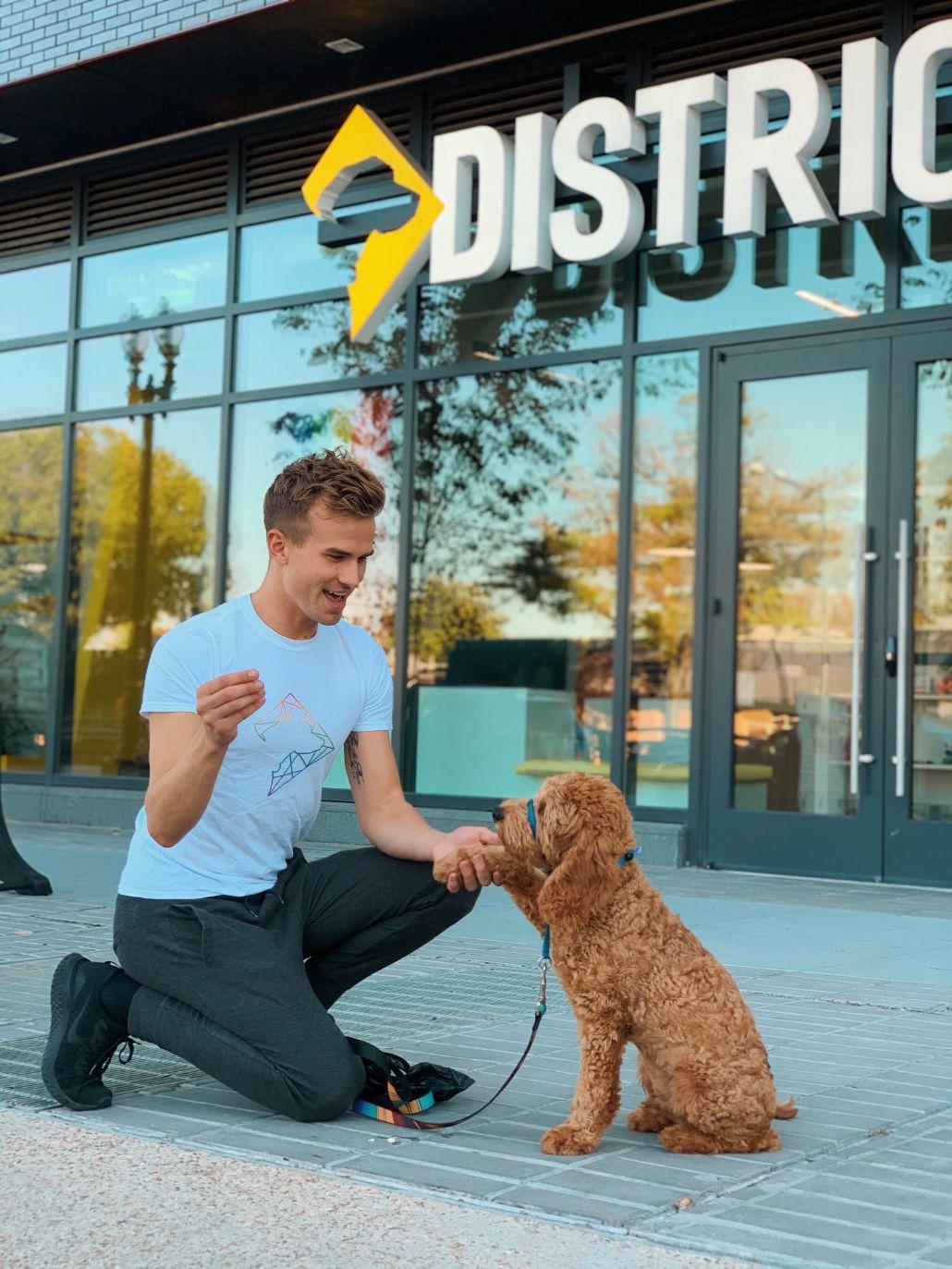It’s no secret that we strongly believe sharing your home and your life with a dog is a wonderful and rewarding experience. But we also know that it comes with challenges for both you and your dog. To make sure you get the most out of life with your pup, we’re sharing our favorite how-tos, tips, and tricks that every dog parent should know. Be sure to check back monthly for new educational content.
Walking the dog is a daily activity for most city pet parents. But nothing turns a fun chance to be outdoors with your dog into a dreaded chore faster than a frustrating tug of war between you and your pup.
Last month we talked about the importance of choosing the right leash for your dog. While leash choice plays a role in making walking a pleasure for you both, the best leash is only as good as the harness it’s paired with. Read on for our tips on choosing the right harness for your pup.
Do I Really Need to Get a Harness for My Dog?
You may be thinking, “My dog already has a collar. Isn’t that good enough for walks?” The answer is: not necessarily. Attaching a leash directly do your dog’s collar can create unnecessary stress on their trachea (windpipe) and neck, ultimately resulting in injury. This is especially the case for dogs who pull on their leash.
But just because your dog walks nicely with a leash and collar doesn’t mean you shouldn’t consider using a harness. Even the most well-behaved dog sometimes can’t resist the allure of a bushy-tailed squirrel or the excitement of a fellow four-legged friend walking a few yards away. A properly fitted collar is still pretty easy for a dog to slip out of if they really want to—and, trust us, sometimes they really do want to. All the harness styles we’ll discuss below offer a more secure fit than a collar alone, and they have the added benefit of allowing you more control over your dog’s movements in a safe and pain-free way.
Choosing the Best Harness Style for Your Dog
There is a wealth of options available when it comes to harnesses. Much like leashes, some of the differences are merely about aesthetic preference, while others can make a big difference in your dog’s behavior and manners when walking. Because it’s impossible to for us cover every distinct harness style available, we’re categorizing them based on their fit and by where the leash is attached.
It’s also worth noting that no harness will work as intended if it doesn’t fit your dog properly. While most companies will give you a rough size guide based on weight, breed, and/or body measurements, it’s important to test the harness on your dog and adjust as needed. A good rule of thumb is that you should aim for a snug fit with just enough room to slip two fingers under the harness.
Back-Clip Harness
Coming in a variety of styles from vests to strappy options, these harnesses all use a ring on the back of your dog for leash attachment. Sometimes the ring might be near the top of the harness, sitting between your dog’s shoulders, while other styles place the ring further down the dog’s spine. Either way, this style is meant to help keep the leash out of your pup’s way while distributing pressure evenly across the front of the body (as opposed to concentrating it on their neck the way a collar would).
Back-clip harnesses are a great choice for dogs who have mastered loose leash walking—meaning they don’t pull and tug during walks. However, if your dog is a puller, this style of harness may actually make the behavior worse by engaging their “opposition reflex”. Essentially, if a dog feels something pulling them in one direction, their instincts tell them to pull in the opposite direction. That’s great if you’re training your pup for pulling a sled through the snow, but it can make a simple potty break or pleasant stroll in the park a nightmare!
Front-Clip Harness
Specifically designed to counter the opposition reflex, front-clip harnesses have a ring that attaches at the chest, right between their two front legs. This gives your dog the sensation of opposition whenever they try to pull forward and helps slow them down. The effects of this harness style can look like magic. We’ve seen even the most dedicated leash pullers turn into calm, polite prancers on their first walk with a front-clip harness.
Some harnesses come with both front and back clips, allowing you to transition between styles, while others like the Easy Walkâ are designed to work as a front-clip only style. Our trainer, Sophia, has a helpful video explaining the value of a front-clip style and how to properly fit an Easy Walk harness as part of loose leash training.
Head Halter
Looking more like a horse bridle than a traditional dog harness, head halters can help address a number of issues: reactivity, leash pulling, and even the tendency of some pups to lunge after random street food (that a parent then has to retrieve from their slobbery jaws).
Although they may look restrictive, head halters are safer than walking your dog with a collar and offer a much greater level of control during walks. This control is achieved by being able to direct your dog’s head (and thus their attention) with relative ease. The harness works by using a loop over the bridge of your dog’s nose and a strap that fastens behind their ears. The leash is attached to a ring that hangs down below your dog’s chin. When fitted properly, your dog will be able to breathe, pant, drink water, enjoy a treat, and even carry a toy while wearing the harness. Head halters often work wonders for big, strong dogs who can be hard to control even with a front-clip harness or for leash-pulling dogs who didn’t get great results using a front-clip style.
Fit is a huge factor in making sure a head halter works properly, and you may want to work with a professional trainer or your vet to get the fit correct the first time. Another point to consider is that most dogs don’t like the head halter at first. Even though it may not be hurting them, the sensation is definitely new and strange. More than any other style, the head halter needs to be slowly introduced to your dog using treats and praise.
Getting the Most Out of Your Harness
Finally, it’s worth nothing that while moving to a front-clip harness or head halter might do wonders to stop leash pulling, it’s not actually teaching your pup that pulling is wrong. If you tried to transition directly into a back-clip harness or walking with just a collar, it’s extremely likely your dog would go back to their leash-tugging ways. We suggest using tools like front-clip harnesses or head halters as part of a broader training plan to teach your dog the good behaviors you expect from them.
We’ve got a short video on getting started with loose-leash training that you can check out on Instagram. However, if you’re really struggling with getting your pup to understand and replicate the desired behavior, we suggest working with a professional. Both our group training and private training options include work on loose leash walking skills. As always, you can contact us to learn more about training options or visit our retail shops to learn more about the different harness options we carry and get assistance with fitting.


